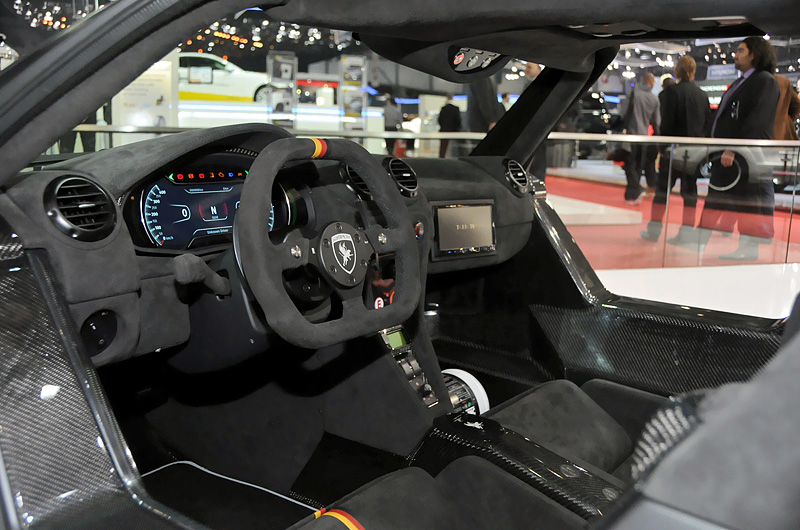The Gumpert Apollo: A Teutonic Titan
The Gumpert Apollo flew under the radar for many enthusiasts during its production from 2005 – 2012. With sharpened edges reminiscent of a stealth fighter, the Apollo’s looks may have been divisive to some, but the exact reason why it never caught on as a household name isn’t clear. This is all somewhat astounding since the performance offered by the Gumpert was never matched by any road-going contemporary.

The adage “race car for the road” is often overused since in reality, most road-going sports cars are heavily compromised. A focused racing car that can rattle the fillings out of your teeth will never sell in large quantities and most major manufacturers know this, but the saying is still kind of edgy and therefore is employed to inspire a little drama. This Gumpert, however, really is something more akin to any race car and yet, in typical German directness, its creators never relied on flowery phrases to sell it.

The Gumpert begins in a typically uncompromising fashion. Starting life as 211 chromoly steel tubes, the lightweight metal is welded together to form a spaceframe. The whole process takes two welders a month. On top of this, the designers add a chromoly and carbon passenger tub and begin fitting the suspension components and the engine to the spaceframe. What this means is that the torsional rigidity is at an extremely high level. Take for instance, the Porsche Carrera GT: a highly-respected performer with a chassis capable of withstanding 30,000 newton-meters of torque before twisting one degree. The Gumpert requires 40,000 and a Formula One car 44,000. What this translates into is extra-sharp and precise handling that takes a refined touch to get the most from.

The carbon fiber structure includes a crashbox at the front which certifies it for FIA-sanctioned competition. To add to it’s no-compromise mentality, the car has an adjustable suspension system with double wishbones and twin transverse control arm pushrods at all four corners. Behind the spartan but comfortable cockpit, which features fixed seats to improve the weight distribution, is a 4.2-liter Audi V8 mated to twin K26 turbochargers. Power outputs vary depending on the particular model. The base Apollo makes an already astounding 650 horsepower, while the Apollo S and the track-only Apollo R make 750 and 850 horsepower, respectively. With huge turbos, the power delivery is that of an archetypal turbo motor, with significant lag before 4500 rpm when the boost kicks in. This earth-moving amount of power is transmitted to the rear wheels via a six-speed sequential gearbox and a twin-plate clutch. It’s safe to say that starting and stopping is a chore.

Space-age chassis: check. Miniature nuclear powerplant turning the rear wheels: check. Oh, and the Gumpert weighs 2400-2600 pounds depending on options. That’s as much as Mini Cooper with the base Gumpert producing over five times the power and torque. With such a power-to-weight ratio, the Gumpert would be competitive with almost anything on the street-going, but its aerodynamics give it that extra edge. Only 3.1 meters tall, the Gumpert is one of the shortest road-going cars in the world and this helps keep the frontal profile small, which helps with the considerable drag produced by the huge wings and splitters. The flat underbody creates a suction effect by channeling the air rushing underneath the car through an expanding shape, giving this car driving dynamics typically reserved to racing cars. When tested at the Nurburgring back in 2009, the Apollo posted a staggering time of 7:11, then faster than any other road-going car except the Radical.

Starting at $600,000, this is a car reserved for the well-heeled, but considering that it was built by a staff of forty atop an old soviet-era sewing factory, it almost seems like a bargain. With Roland Gumpert’s vision of developing a road-going track car fulfilled, the Apollo gained considerable media attention for a short while. With the economic slump in the late 2000’s, many prospective customers had to rescind their offer and Gumpert just squeaked by, thanks to the aid of its many investors. Not keen to fall by the wayside, Gumpert and his team released a lighter, more powerful version called in Apollo Enraged in 2012. Since then, the German company has not made much noise.

Perhaps the car is too extreme for the anyone but the most avid enthusiast. It might be too obscure for those seeking recognition, but in reality the Gumpert will turn heads anywhere it goes. Importantly, it was never designed to sell in large quantities. Anything this focused from such a small company will never be able to match the numbers of major manufacturers like Porsche and Ferrari and that’s fine – the car remains a paragon of automotive idealism. The Gumpert is the buy for an affluent, talented driver with an appreciation for sophisticated, no-compromise engineering. Whether we have the funds or not, there is something admirable, something almost awe-inspiring about this car and that which it strives for which resonates with the inner idealist in all of us.
